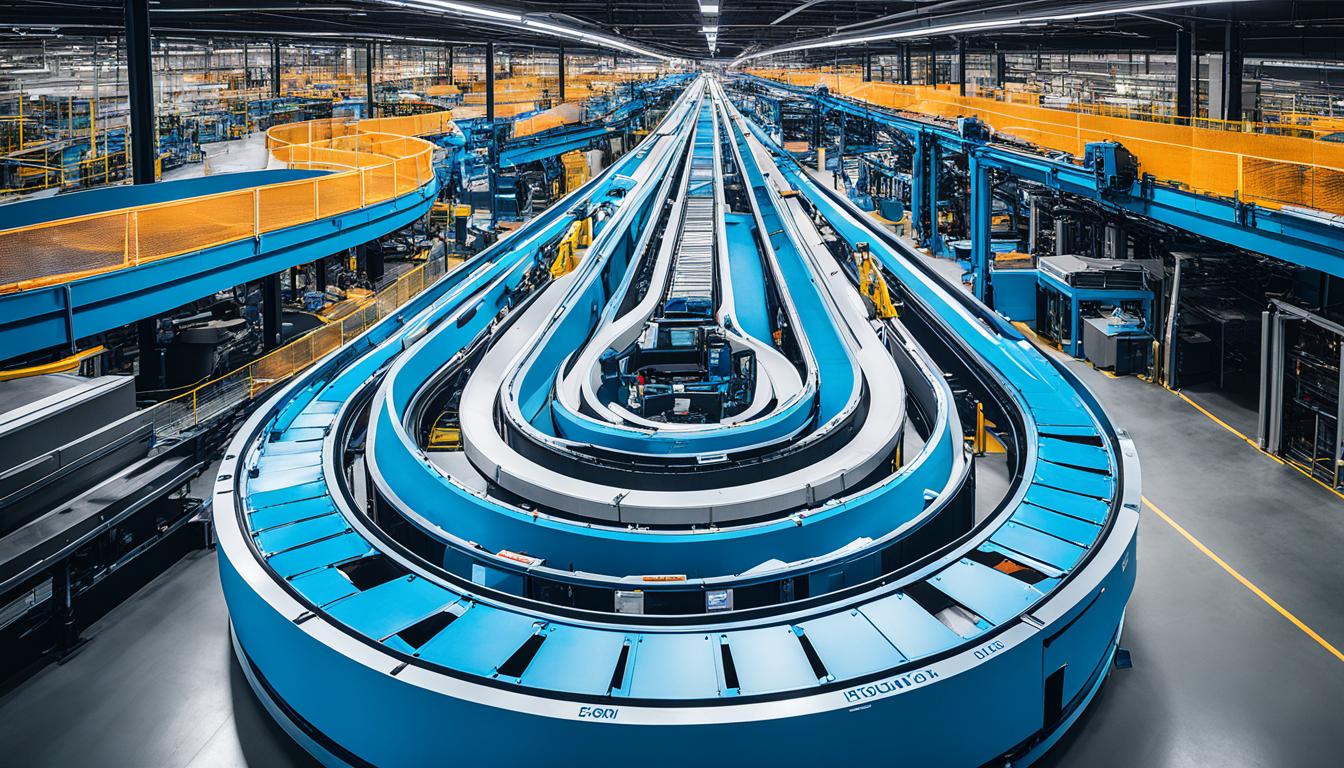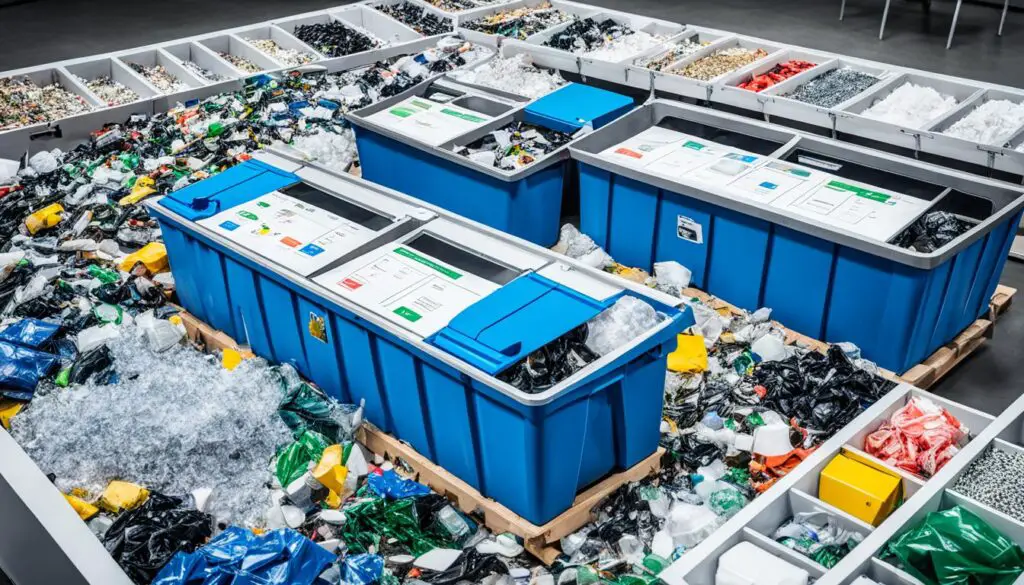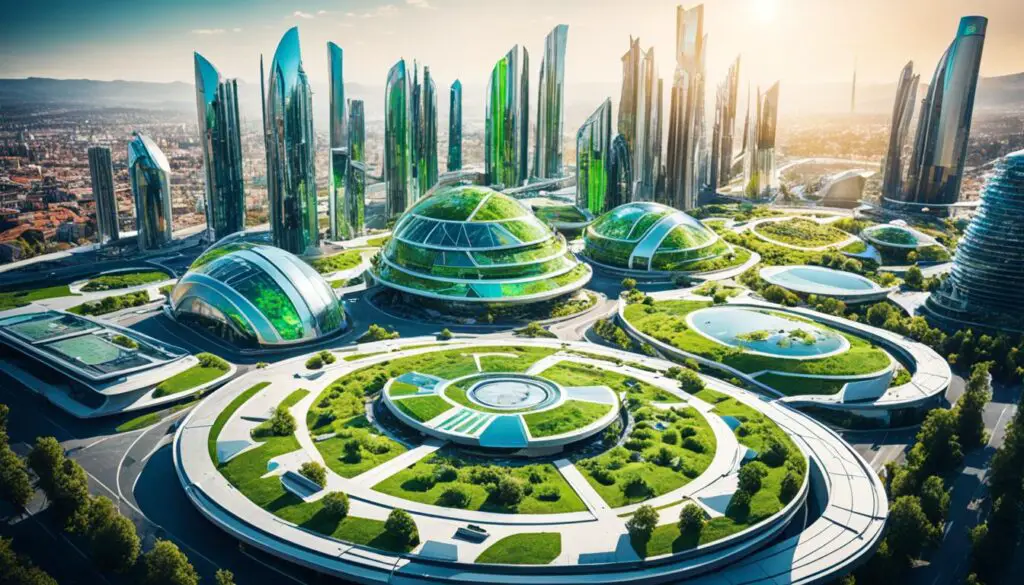
Businesses around the world are moving towards a circular economy. They see the value in sustainable solutions. AI steps in as a major force driving this shift. It helps tackle the current hurdles, making resource use more efficient, reducing waste, and caring for the environment.
Key Takeaways:
- AI can extend the lifespan of products, reduce material usage, and incorporate more recycled materials, fostering circularity.
- Machine learning and deep learning algorithms enable waste classification, circular production systems, and resource optimization.
- AI technologies improve waste management by enhancing waste classification, enabling behavioral change, and optimizing logistics.
- Ethical considerations and policy recommendations are crucial in ensuring the responsible and transparent use of AI in the circular economy.
- Collaboration between governments, industry, and experts is essential to harness the full potential of AI in driving the circular economy.
The Role of AI in Advancing the Circular Economy
AI is reshaping the circular economy, making waste management and resource use more efficient. It uses machine learning and deep learning to help companies become greener and more efficient.
AI changes how we handle waste, making sorting quick and error-free. This means we can recycle more and lose fewer valuable resources.
AI also helps create eco-friendly packaging. It designs materials that are good for the planet and look great. This approach considers the product’s full life cycle, which is key to the circular economy.
“AI lets companies create circular systems, improving production and cutting waste. It uses predictions to balance supply and demand. This boosts both the environment and business profits.”
AI finds new ways to reuse, recycle, and fix items, making us use resources better and waste less. By analyzing data, AI improves these strategies, helping us move towards a sustainable future.
AI’s impact on resource management is huge, pushing us towards a circular economy. Companies that adopt AI can lessen their environmental harm and promote sustainability.

AI Innovations in Circular Production Systems
| AI Applications | Benefits |
|---|---|
| Optimization of production processes | – Minimizes waste and resource consumption – Reduces energy consumption |
| Demand and supply forecasting | – Keeps production and storage balanced – Prevents too much production and waste |
| Identification of recycling and reusing opportunities | – Makes better use of resources – Lowers waste and use of landfills |
AI Innovations for Reuse and Recycling
AI is changing the recycling world and making us think differently about trash. It uses advanced technology, like seeing and recognizing patterns, to improve recycling. This makes sorting trash easier and more precise.
With AI, recycling gets smarter. Systems can identify different kinds of waste accurately. This means more gets recycled, and less gets thrown away. It helps our planet by making us use resources more wisely.
Not only does AI help sort waste, it also encourages us to do better. Smart devices give us tips on how to separate trash correctly. These friendly hints increase how much we recycle.
“AI in waste systems is a game changer. It inspires us to be more eco-friendly and cut down on trash.”
Predictive Pickup Systems:
The next big thing is AI managing when to collect trash. These systems use data to plan the best pickup times. This saves fuel and lessens pollution. They schedule trash collection more efficiently, based on people’s needs.

By including AI in waste management, we make recycling easier and motivate everyone to join in. Using AI to sort trash, give helpful hints, and plan pickups leads to a cleaner, smarter world.
Conclusion
The mix of AI and the circular economy can lead to great sustainable solutions. Yet, it’s key to think about the ethical issues that come up with AI use in circular economy projects.
We need clear policies for using AI in the circular economy ethically. Policies should focus on being open, responsible, and keeping data safe. This means setting rules for AI algorithms and keeping data secure.
Working together is crucial for making rules that ensure AI‘s ethical use in the circular economy. This teamwork can help use AI‘s power to move us toward a sustainable future. This future uses resources well and cuts down on waste.
FAQ
How can AI drive the circular economy forward?
How is AI revolutionizing the recycling industry?
What are some AI innovations for waste management?
What ethical concerns are associated with AI and the circular economy?
Source Links
- https://hbr.org/2023/06/how-ai-will-accelerate-the-circular-economy
- https://n3xtcoder.org/blog/2023-05-17_exploring-the-impact-of-ai-innovations-on-the-circular-economy
- https://link.springer.com/article/10.1007/s00146-022-01596-8






